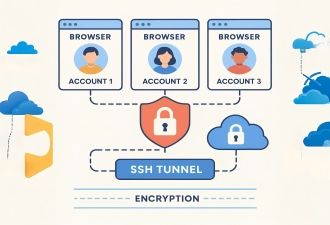How Virtual Browsers Help You Stay Anonymous Online?


Today is the data age — no matter how we access the internet we leave traces, such as IP addresses, device fingerprints, cookies, and browsing history. These pieces of information are used by ad platforms, data platforms, and website analytics tools to track your online activity.
For ordinary users, privacy is being eroded continuously. For practitioners in cross-border e-commerce, ad campaigns, and social media marketing, account linking, detection and bans have become commonplace.
So, is there a tool that can both protect privacy and simulate a real user operating environment? This is — the Virtual Browser.

1. What is aVirtual Browser?
Simply put, a virtual browser is a tool that can isolate, mask, and simulate multiple browsing environments. It is not the “incognito mode” or a browser plugin you may be familiar with; rather, it is an independent virtual environment running in the cloud or locally, where each browser configuration is equivalent to a brand-new device.
For example:
If you are doing social media marketing and you log into multiple Facebook accounts in Chrome, the platform can easily judge that “multiple accounts are logged in from the same device,” triggering risk controls that may lead to mass account bans or restrictions.
If you use a virtual browser, however, you can create an independent browser environment for each account, with separate IPs, fingerprint information, timezones, languages, etc. — just like multiple different computers or phones logging in from various locations worldwide — which helps avoid triggering platform risk controls and account bans.
2. How does a virtual browser enable anonymous browsing?
The “anonymity” of a virtual browser comes from its multi-layer anti-tracking mechanisms, as described below:
1. Independent cookie cache isolation
Each virtual browsing environment has independent caches, cookies and local storage that are not shared with other environments, preventing cross-account tracking at the source.
2. Browsing environment isolation
The core of a virtual browser is the “environment sandbox” mechanism — even if one browsing environment shows anomalies, it will not affect other environments because each runs independently.
3. Device fingerprint spoofing
Ordinary browsers expose a lot of information — including resolution, fonts, OS version, and more. A virtual browser can randomize or customize these data, making it hard for websites to recognize that visits come from the same device.
4. Global IP proxy support
Virtual browsers, when paired with dynamic or residential proxies, automatically assign different country- or region-based IPs to each environment to further enhance anonymity. For example, if you manage many Instagram accounts, you can operate one account using a US IP and another using a UK IP via virtual browsers — they will be completely unrelated.
3. Why do users like anonymous browsing?
The need for anonymous browsing is not only about “hiding yourself”; it is largely driven by security considerations.
1. Prevent account linking and bans
In cross-border e-commerce, advertising, and social media operations, you often need multiple accounts. If those accounts are identified as logging in from the same environment, they can be mass-banned.
Using a virtual browser to tailor an independent environment for each account — achieving “one account, one device” — greatly reduces risk from platform controls.
2. Prevent data tracking and targeted ads
Today’s ad systems use your behavior and browsing habits to deliver targeted content. By randomizing fingerprints with a virtual browser, you can disrupt these algorithms and avoid continuous tracking.
4. Key points to consider when choosing a virtual browser
1. Compatibility with proxies and automation tools
Professional virtual browsers (such as MostLogin) can seamlessly connect to proxy IP pools and are compatible with automation tools like Selenium or Puppeteer.
2. Whether the fingerprint spoofing is realistic and effective
Some tools only change UA or IP and cannot fully prevent platform detection.
3. Support for multi-platform synchronized operations and team collaboration
For enterprises, features like multi-user collaboration and environment sharing are very important.
5. Conclusion: Anonymous browsing is more than “hiding yourself”
Virtual browsers are popular not only because they prevent linking and help manage multiple accounts, but also because people increasingly value privacy and protection. Everyone wants to browse safely and anonymously.
Whether you are a cross-border seller, a social media marketer, or a user who values online privacy, learning to use virtual browsers can make your browsing safer and freer.
If you’re unsure how to choose a virtual browser, try MostLogin — a professional virtual browser and multi-account management tool that guards your online privacy!
🚀 Best Free Anti-Detection Browser — MostLogin
A professional-grade fingerprint browser tailored for global advertisers, e-commerce sellers, and teams
If you have operational questions, please check the official help documentation


